Art not bling: Qatar’s cultural revolution
By William Cook | 17 December 2014

Standing outside Qatar's Museum of Islamic Art, squinting in the sunshine, the history of this oil-rich nation lies spread out before you like a map.
On your left are the weathered remnants of old Doha, a dusty fishing village which stood here before Qatar struck oil. To your right is the high rise skyline of new Doha, built by the richest country (per capita) in the world.
But the Qataris don't want Doha to become the capital of bling, like Dubai. Instead, they're spending billions building a brand new capital of culture.
In Abu Dhabi the Emirians are constructing a new Louvre and a new Guggenheim, but they've got some catching up to do.
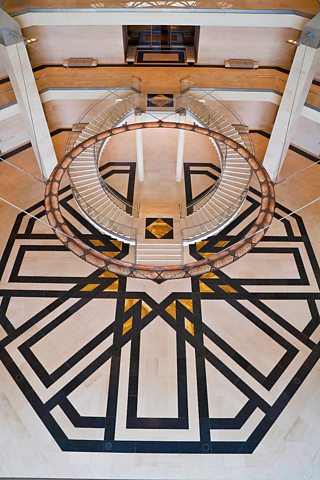
A delicate Iranian carpet depicts the tale of Leila & Majnun, a story a lot like Romeo & Juliet
Doha's landmark museum is already a national icon. Built by Sino-American starchitect IM Pei, the Museum of Islamic Art (MIA) sums up Qatar's vast cultural ambitions - to become a centre of the arts, but entirely on its own terms.
While Abu Dhabi's Louvre aims to represent a worldwide range of art and beliefs, from Hindu sculptures of Shiva to the Catholic art of Bellini, MIA's vision is unashamedly specific. As it says on the tin, this is a museum devoted to the art of Islam.
For Western visitors, the MIA is a revelation. The collection ranges from Spain to China. It spans a thousand years.
The display begins with an ancient bowl, made in Iraq in the 9th Century. Elegant, yet supremely simple, it looks almost contemporary. 'What is done is worthwhile', reads an Arabic inscription upon it. It could double as a motto for this remarkable museum.
This exhibition refutes many western misconceptions about Islam. Depictions of humans and animals are avoided in religious contexts, but they appear frequently in domestic and secular situations.
With its emphasis on geometry, Islamic art looks very different - but there are some surprising similarities. A delicate Iranian carpet, woven in the late 16th or early 17th Century, depicts the tale of Leila & Majnun, a story a lot like Romeo & Juliet.
These exhibits remind you that Islam and Christendom were never entirely separate. Arabic scholars translated Greek texts into Arabic. Christian scholars translated those Arabic texts into Latin. Yet Islam’s preference for abstraction created its own aesthetic.
Calligraphy assumed unique importance. Writing a thousand years ago, the Persian philosopher Abu Hayyan al-Tawhidi called it 'jewellery fashioned by the hand from the pure gold of the intellect'. Viewing these ornate manuscripts today, you can still see what he meant.
Museum of Islamic Art

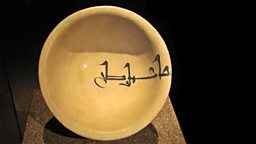

The Doha scene

MIA is one of many museums in this mushrooming metropolis. With over 8000 items, Doha's Arab Museum of Modern Art (MATHAF) is the largest contemporary collection in the Gulf.

Iranian artist Shirin Neshat's photos of armed women in hijabs are haunting and strangely beautiful
Its current show (until 15th February) is Afterwards by Iranian artist Shirin Neshat. Her photos of armed women in hijabs are haunting and strangely beautiful.
Among the many artists in the permanent collection is the Qatari painter Yousef Ahmad, who also has a one man show at Katara, Doha's new 'cultural village'.
This lavish arts complex includes an opera house, a concert hall, a theatre and a gallery. Ranging from figurative paintings of old Qatar to calligraphic abstracts, Ahmad's retrospective (which runs until 14th February) reveals the broad range of Qatari art, through the work of a single artist.
Doha is also an important forum for international sculpture: a Richard Serra monolith stands outside MIA; one of Louise Bourgeois' giant spiders guards the foyer of the palatial Qatar National Convention Centre, where Qatar's Philharmonic Orchestra play.
Doha's annual Film Festival attracts filmmakers from all across the Arab world. Qatar is also home to Al-Jazeera, the leading news broadcaster in the Middle East.
Freedom of expression
For Westerners, it's a surprise to find such a vibrant arts scene in an autocratic monarchy, whose subjects enjoy few of the freedoms we take for granted in the West. Most Qataris adhere to the strict Wahhabi sect of Islam.
Qatari poet Mohammed al-Ajami was recently imprisoned for 15 years for writing poems deemed to be critical of Qatar’s ruling royal dynasty (Amnesty International is campaigning for his release).
So, as a creative artist in Qatar, how far can you go? Well, that depends on what you want to say, and how you want to say it. In this environment, visual art is far more versatile than literature.
Painting can communicate more obliquely than the written word. Over the last few years I've seen a lot of striking art here in Doha, both indigenous and international - but no nudity or homosexuality, and nothing whatsoever that's remotely critical of Qatar or Islam.
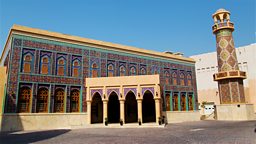
Shirin Neshat
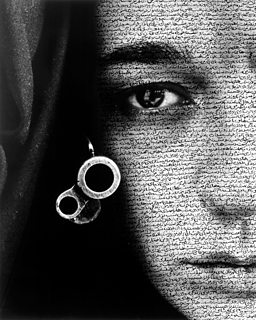
Louise Bourgeois
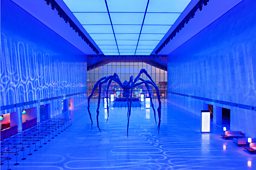
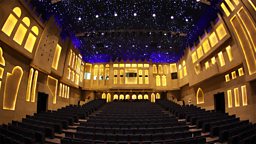

An evolving Qatari scene
In The Pearl, Doha's new city within a city, built on an enormous manmade peninsular, I meet Ghada Sholy, who runs her own commercial gallery, called Anima. A Palestinian raised in Lebanon, she's lived in Qatar for thirty years.
A Tracey Emin neon sculpture has pride of place in her sleek artspace, which doubles as a stylish café. This isn't just a showroom - it's a cultural rendezvous.
'We have much more interest now from local people’ says Ghada, as she shows me round. 'The Qatar Museum Authority is really working hard on encouraging young Qatari artists'.
Next month, an old fire station will reopen as a space for these artists to show their work.
'The Islamic Art Museum and MATHAF play a big role', she says. 'Dubai has more galleries, but no museums.'
Not yet, at any rate. But Qatar may be about to trump the United Arab Emirate's Louvre and Guggenheim. Doha's new National Museum is still under scaffolding, but it already looks stunning. Designed by French architect Jean Nouvel, it's an artwork in its own right.
Naturally it helps if you're one of the world's biggest producers of Liquid Natural Gas, but as Ghada reminds me, money isn't everything.
'Of course you need money to buy expensive art,' she says, 'but in order to create an environment, you need much more than money. You need awareness, you need education, you need encouragement, you need a culture.'
Qatar is creating a new culture, almost overnight, from the top down, rather than the bottom up. 'I wouldn’t have opened my gallery if I didn't feel the vibe, if I didn't feel that something was going on.'
Next door to the Museum of Islamic Art, there's a smart new annexe called Al Riwaq. Last year Damien Hirst was the star turn here.
Inside is a mixed show - artists from all across the region. Two abstracts called Equilibrium and Pandemonium sum up the tranquillity of old Qatar and the chaos of today's construction sites. Lens of Genesis compares Shakespeare's Macbeth with the pre Islamic myth of Zarqa al-Yamama, a blue-eyed Arabian woman who foresaw the future.
'Join the dialogue' reads a sign outside. I hope these devout people will welcome the dialogue their cultural revolution is creating, even if it isn't always entirely what they want to hear.
'Qatar is a Muslim country, it's a conservative country, but it's a progressing country', says Ghada. 'People respect their religion, respect their traditions, but they want to be educated – they want to learn.'
Her gallery shows there is a way to please both sides. 'You can do whatever you want, as long as you respect the traditions of the people here.'
Related Links

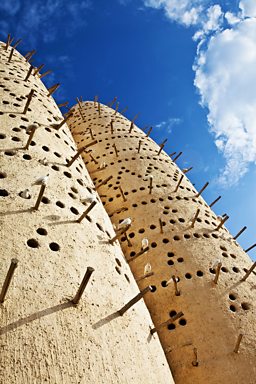
Clips from The Hidden Art of Islam
-
![]()
The art of Islamic calligraphy
Rageh Omaar explores the art of Islamic calligraphy
-
![]()
Islam, geometry and nature
Rageh Omaar speaks to Islamic artists about their designs and techniques
-
![]()
The rich traditions of Islamic art
The origins of the Muslim approach to visual art and how in practice Islamic art has developed
-
![]()
Islamic figurative art
The compromise by Islamic artists who produced strictly stylised one-dimensional artwork
Art and Artists: Highlights
-
![]()
Ai Weiwei at the RA
The refugee artist with worldwide status comes to London's Royal Academy
-
![]()
BBC Four Goes Pop!
A week-long celebration of Pop Art across BBC Four, radio and online
-
![]()
Bernat Klein and Kwang Young Chun
Edinburgh’s Dovecot Gallery is hosting two major exhibitions as part of the 2015 Edinburgh Art Festival
-
![]()
Shooting stars: Lost photographs of Audrey Hepburn
An astounding photographic collection by 'Speedy George' Douglas
-
![]()
Meccano for grown-ups: Anthony Caro in Yorkshire
A sculptural mystery tour which takes in several of Britain’s finest galleries
-
![]()
The mysterious world of MC Escher
Just who was the man behind some of the most memorable artworks of the last century?
-
![]()
Crisis, conflict... and coffee
The extraordinary work of award-winning American photojournalist Steve McCurry
-
![]()
Barbara Hepworth: A landscape of her own
A major Tate retrospective of the British sculptor, and the dedicated museums in Yorkshire and Cornwall
Art and Artists
-
![]()
Homepage
The latest art and artist features, news stories, events and more from BBC Arts
-
![]()
A-Z of features
From Ackroyd and Blake to Warhol and Watt. Explore our Art and Artists features.
-
![]()
Video collection
From old Masters to modern art. Find clips of the important artists and their work















